Writing Simple OCLC Connexion Client Macros
Mini-tutorial
Before you begin, decide which repetitive task you will be automating with your macro. Then, follow the steps below to create your macro.
Step 1: next
Select Tools, Macros, Manage

Step 2: prev next
Click the New Book button

Step 3: prev next
Type a name for your new macro book.
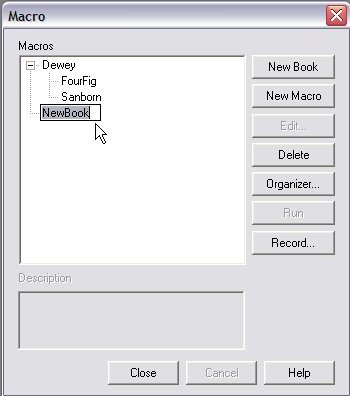
Step 4: prev next
With the new macro book name highlighted, click on the Record button.

Step 5: prev next
Type a name and a description for your new macro. You can skip entering a description, but you must enter a name. (Keep the name short, no spaces or punctuation.)
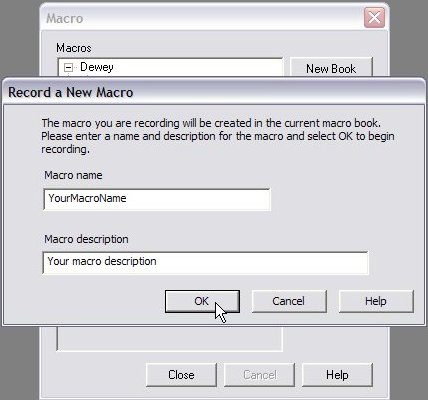
Step 6: prev next
Go through all the steps you would normally go through in the repetitive task. You can even begin by logging in and searching for a record.
When you have completed the steps in the repetitive task, click the red macro Stop button.

Step 7: prev next
To see the syntax of your new macro, select Tools, Macros, Manage again.

Then, with your macro name highlighted, click Edit
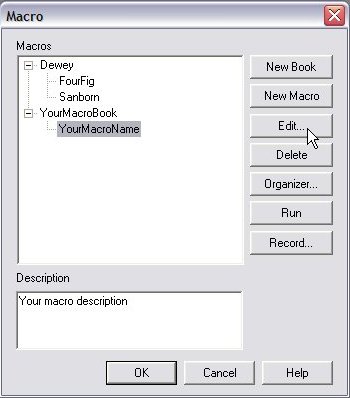
You will see how your macro is constructed. The lines shown here are the only lines you always need in a macro.
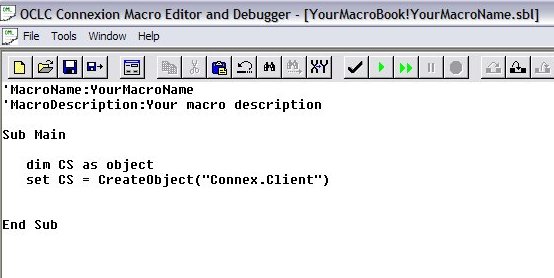 You will also see other lines which the macro recorded and which will tell the computer what you want it to do when you run your macro.
You will also see other lines which the macro recorded and which will tell the computer what you want it to do when you run your macro.
Step 8: prev next
To run your macro:
Select Tools, Macros, Manage

Then, with your macro name highlighted, click Run.
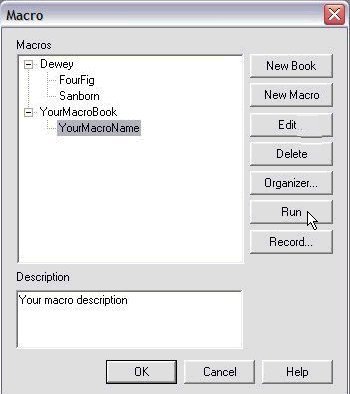
Step 9: prev
You can make running your macros easier by assigning them to keys. You can assign macros to keys two different ways.
One way is to assign macros to keys using the Tools, Options method. If you use this method, the assigned keys will remain assigned unless you change them. To see steps for assigning your macros to keys this way click here.
OR ... you can create a logon macro and add the following line of code for each macro you want to assign to a key.
Sub Main
dim CS as object
set CS = CreateObject("Connex.Client")
CS.Logon "", "", ""
CS.AssignMacroToKey "F3", "YourMacroBook.mbk!YourMacroName", True
End Sub
If you use this method, you must run your logon macro to assign the macros to the keys. The word "True" in the line above causes your macro key assignment to override the default assignment for the key.
Wasn't that simple?
Of course, you can do more. For instance, you can create variables the simple way ...
If you want to see more, click here
Back to top of page
|